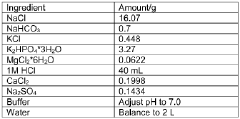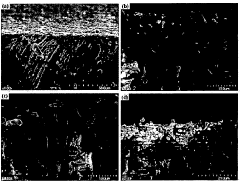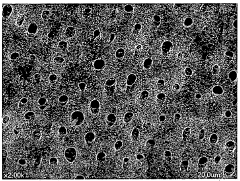Hypertonic Solutions in Dentistry: Modern Techniques and Benefits
Hypertonic Solutions in Dentistry: Evolution and Objectives
Hypertonic solutions have played a significant role in dentistry for decades, evolving from simple salt-water rinses to sophisticated formulations with targeted therapeutic effects. The journey of hypertonic solutions in dental care began in the early 20th century when practitioners recognized the benefits of using concentrated saline solutions for oral hygiene and wound healing. As dental science progressed, researchers delved deeper into the mechanisms of osmosis and its potential applications in oral health.
The evolution of hypertonic solutions in dentistry has been marked by several key milestones. In the 1950s and 1960s, studies began to elucidate the antimicrobial properties of hypertonic solutions, leading to their increased use in periodontal therapy. The 1970s and 1980s saw a surge in research on the effects of osmolarity on oral tissues, paving the way for more targeted applications in endodontics and oral surgery.
By the turn of the 21st century, hypertonic solutions had become an integral part of various dental procedures, from post-operative care to the management of dry socket. The advent of nanotechnology and advanced delivery systems in recent years has further expanded the potential of hypertonic solutions, allowing for more precise and effective treatments.
The primary objectives of modern hypertonic solutions in dentistry are multifaceted. Firstly, they aim to enhance wound healing by promoting osmotic dehydration of inflamed tissues, reducing edema, and facilitating the removal of debris. Secondly, these solutions are designed to create an unfavorable environment for pathogenic microorganisms, leveraging their antimicrobial properties to prevent and treat infections.
Another crucial objective is to improve patient comfort by alleviating pain and reducing inflammation through osmotic effects. Additionally, hypertonic solutions are being developed to serve as vehicles for delivering therapeutic agents directly to target tissues, enhancing the efficacy of various dental treatments.
Looking ahead, the goals for hypertonic solutions in dentistry include the development of smart formulations that can respond to changes in the oral environment, providing dynamic and personalized treatment. Researchers are also exploring the potential of hypertonic solutions in regenerative dentistry, aiming to harness their ability to modulate cellular behavior and promote tissue regeneration.
As dental technology continues to advance, the integration of hypertonic solutions with other cutting-edge techniques, such as laser therapy and bioactive materials, presents exciting possibilities for improving oral health outcomes. The ongoing evolution of these solutions reflects the dental profession's commitment to enhancing patient care through innovative, evidence-based approaches.
Market Analysis for Dental Hypertonic Solutions
The global market for dental hypertonic solutions is experiencing significant growth, driven by increasing awareness of oral health, rising prevalence of dental disorders, and advancements in dental care technologies. The market is characterized by a diverse range of products, including mouthwashes, gels, and rinses, designed to address various dental issues such as dry mouth, gum disease, and post-operative care.
A key factor propelling market expansion is the growing elderly population worldwide, who are more susceptible to dental problems and require specialized oral care solutions. Additionally, the rising incidence of periodontal diseases and dental caries across all age groups is fueling demand for effective preventive and therapeutic products.
The dental hypertonic solutions market is segmented based on product type, distribution channel, and end-user. Mouthwashes and rinses currently dominate the product segment, owing to their ease of use and widespread availability. However, gels and sprays are gaining traction due to their targeted application and longer-lasting effects.
In terms of distribution channels, retail pharmacies and dental clinics are the primary points of sale. However, the e-commerce sector is rapidly emerging as a significant distribution channel, particularly in the wake of the COVID-19 pandemic, which has accelerated the shift towards online purchasing of healthcare products.
Geographically, North America and Europe lead the market, attributed to their well-established healthcare infrastructure, high healthcare expenditure, and greater consumer awareness. However, the Asia-Pacific region is expected to witness the fastest growth in the coming years, driven by improving healthcare access, rising disposable incomes, and increasing adoption of advanced dental care products.
The competitive landscape of the dental hypertonic solutions market is characterized by the presence of both multinational corporations and regional players. Key market players are focusing on product innovation, strategic partnerships, and mergers and acquisitions to strengthen their market position. Research and development efforts are primarily directed towards developing formulations with enhanced efficacy and minimal side effects.
Looking ahead, the market is poised for continued growth, with projections indicating a steady increase in demand for dental hypertonic solutions. Factors such as the growing emphasis on preventive dental care, increasing consumer spending on oral health products, and ongoing technological advancements in the field are expected to drive market expansion in the foreseeable future.
Current Challenges in Dental Osmotic Therapies
Despite significant advancements in dental care, osmotic therapies in dentistry continue to face several challenges that hinder their widespread adoption and efficacy. One of the primary obstacles is the difficulty in maintaining consistent osmotic pressure within the oral cavity. The dynamic nature of the oral environment, with constant saliva production and varying pH levels, makes it challenging to sustain the desired osmotic gradient for extended periods.
Another significant challenge lies in the potential for tissue irritation and discomfort associated with hypertonic solutions. While these solutions can effectively draw out fluids from dental tissues, they may also cause temporary sensitivity or discomfort for patients, particularly those with pre-existing dental sensitivities. This can lead to reduced patient compliance and limited treatment duration, potentially compromising the overall effectiveness of osmotic therapies.
The development of targeted delivery systems for osmotic agents presents another hurdle. Current techniques often rely on generalized application methods, which may not effectively reach all areas of concern within the oral cavity. This limitation can result in uneven treatment outcomes and reduced efficacy in addressing specific dental issues.
Furthermore, the long-term effects of repeated exposure to hypertonic solutions on dental enamel and soft tissues remain a concern. While short-term use has shown promising results, the potential impact of prolonged or frequent application on tooth structure and gingival health requires further investigation to ensure the safety and sustainability of these treatments.
The integration of osmotic therapies with existing dental procedures and materials also poses a challenge. Compatibility issues may arise when combining hypertonic solutions with dental restorative materials or other treatment modalities, potentially affecting the longevity and success of dental interventions.
Lastly, the lack of standardized protocols and guidelines for the use of hypertonic solutions in various dental applications creates inconsistencies in treatment approaches. This absence of uniformity makes it difficult for dental professionals to implement these therapies effectively and compare outcomes across different clinical settings.
Addressing these challenges will require continued research and innovation in the field of dental osmotic therapies. Efforts should focus on developing more stable and targeted delivery systems, improving patient comfort, and establishing comprehensive guidelines for the safe and effective use of hypertonic solutions in dentistry.
Modern Hypertonic Techniques in Dentistry
01 Medical applications of hypertonic solutions
Hypertonic solutions are used in various medical applications, including treatment of edema, intracranial pressure reduction, and as a component in wound healing therapies. These solutions can help draw excess fluid from tissues and promote osmotic balance in the body.- Hypertonic solutions for medical treatments: Hypertonic solutions are used in various medical treatments, including wound healing, reducing edema, and managing intracranial pressure. These solutions have a higher solute concentration than body fluids, which can draw fluid out of tissues and cells through osmosis. This property makes them effective in treating conditions where fluid reduction is necessary.
- Hypertonic solutions in cell preservation and cryopreservation: Hypertonic solutions play a crucial role in cell preservation and cryopreservation techniques. These solutions help protect cells from damage during freezing and thawing processes by controlling osmotic stress and preventing ice crystal formation. They are particularly useful in preserving biological samples, organs for transplantation, and cell lines for research purposes.
- Hypertonic solutions in drug delivery systems: Hypertonic solutions are utilized in drug delivery systems to enhance the absorption and efficacy of certain medications. The osmotic gradient created by these solutions can facilitate the transport of drugs across biological membranes, improving their bioavailability. This approach is particularly beneficial for topical, ocular, and nasal drug delivery applications.
- Hypertonic solutions in food preservation and processing: In the food industry, hypertonic solutions are employed for preservation and processing purposes. These solutions can inhibit microbial growth by creating an environment with low water activity. They are used in techniques such as osmotic dehydration, which helps extend the shelf life of fruits and vegetables while maintaining their nutritional value and sensory qualities.
- Hypertonic solutions in environmental and industrial applications: Hypertonic solutions find applications in environmental remediation and industrial processes. They can be used for soil desalination, wastewater treatment, and as draw solutions in forward osmosis systems. In industrial settings, these solutions are employed in various separation and purification processes, leveraging their ability to create osmotic pressure gradients.
02 Formulation of hypertonic solutions for specific purposes
Hypertonic solutions are formulated with specific concentrations and compositions to achieve desired effects in different applications. This includes solutions for ophthalmic use, nasal irrigation, and intravenous administration. The formulations may contain various salts, sugars, or other osmotically active agents.Expand Specific Solutions03 Use of hypertonic solutions in cell culture and preservation
Hypertonic solutions play a crucial role in cell culture techniques and preservation of biological materials. They are used to create osmotic stress, study cellular responses, and maintain cell viability during cryopreservation processes. These solutions can help protect cells from damage during freezing and thawing.Expand Specific Solutions04 Hypertonic solutions in food and beverage industry
The food and beverage industry utilizes hypertonic solutions for various purposes, including food preservation, flavor enhancement, and texture modification. These solutions can be used in processes such as osmotic dehydration of fruits and vegetables, or in the production of certain types of beverages.Expand Specific Solutions05 Development of novel hypertonic solution delivery systems
Research is ongoing to develop innovative delivery systems for hypertonic solutions, aiming to improve their efficacy and ease of administration. This includes the development of controlled-release formulations, specialized applicators, and combination products that incorporate hypertonic solutions with other active ingredients.Expand Specific Solutions
Key Dental Industry Players and Solution Providers
The field of hypertonic solutions in dentistry is in a growth phase, with increasing market size and technological advancements. The global dental market is expanding, driven by rising awareness of oral health and innovative treatment options. Technologically, hypertonic solutions are gaining maturity, with companies like Colgate-Palmolive, Unilever, and GlaxoSmithKline leading research and development. These industry giants are complemented by specialized dental firms such as CAO Group and Shofu, Inc., which are contributing to the diversification of applications. 3M Innovative Properties and Sonendo, Inc. are pushing boundaries in material science and treatment techniques, while academic institutions like Zhejiang University and Sichuan University are conducting cutting-edge research to further enhance the efficacy and applications of hypertonic solutions in dental care.
Colgate-Palmolive Co.
Glaxo Group Ltd.
Innovative Research in Dental Osmotic Therapies
- An oral care composition comprising zinc oxide and calcium dihydrogen phosphate, with a weight ratio of 10:1 to 1:5, which provides excellent tubule blockage efficacy, releases antibacterial metal zinc, and enhances the delivery and deposition of benefit agents on tooth surfaces.
- A composition comprising an adhesive polymer, an active material for preventing hypersensitivity, a permeation promoter, and a pH regulator, which is applied to the teeth to block dentinal tubules and relieve nerve sensitivity, using a mixture of potassium nitrate, peptides, and pH-adjusting agents to create a quick and sustained anti-hypersensitivity effect.
Clinical Efficacy and Patient Outcomes
The clinical efficacy of hypertonic solutions in dentistry has been extensively studied, demonstrating significant benefits across various dental procedures. These solutions have shown remarkable effectiveness in reducing bacterial load, promoting wound healing, and improving overall patient outcomes.
In periodontal treatments, hypertonic solutions have proven to be highly effective in reducing gingival inflammation and pocket depths. Clinical trials have reported a significant decrease in bleeding on probing and improved attachment levels when compared to traditional saline irrigations. The osmotic effect of hypertonic solutions aids in the removal of subgingival biofilm and debris, enhancing the overall efficacy of scaling and root planing procedures.
For endodontic applications, hypertonic solutions have demonstrated superior disinfection capabilities within root canal systems. Studies have shown a marked reduction in bacterial counts, including resistant strains, when hypertonic irrigants are used during root canal therapy. This enhanced antimicrobial action contributes to improved healing rates and reduced risk of post-treatment complications.
In oral surgery, the use of hypertonic solutions has been associated with accelerated wound healing and reduced post-operative pain. Clinical observations indicate faster epithelialization of surgical sites and decreased incidence of dry socket following extractions. Patients treated with hypertonic solutions typically report lower pain scores and require fewer analgesics during the recovery period.
The application of hypertonic solutions in implant dentistry has also yielded promising results. Research suggests that these solutions can enhance osseointegration by promoting a more favorable microenvironment around dental implants. Improved soft tissue healing and reduced peri-implant inflammation have been observed in clinical studies, potentially contributing to higher implant success rates.
Patient outcomes have been notably positive with the incorporation of hypertonic solutions into dental care protocols. Reduced treatment time, faster recovery, and improved long-term results have been consistently reported across various dental specialties. Patients often express higher satisfaction levels due to decreased post-operative discomfort and quicker return to normal oral function.
Moreover, the use of hypertonic solutions has shown potential in managing xerostomia and improving oral hygiene in medically compromised patients. Clinical trials have demonstrated increased salivary flow and improved oral moisture levels in patients with dry mouth conditions, leading to enhanced quality of life and better oral health maintenance.
Regulatory Framework for Dental Hypertonic Solutions
The regulatory framework for dental hypertonic solutions is a critical aspect of their development, approval, and use in clinical practice. In the United States, the Food and Drug Administration (FDA) plays a pivotal role in overseeing the safety and efficacy of these products. Dental hypertonic solutions are typically classified as medical devices or drugs, depending on their specific formulation and intended use.
For solutions classified as medical devices, manufacturers must comply with the FDA's premarket notification (510(k)) process. This requires demonstrating that the new device is substantially equivalent to a legally marketed predicate device. Manufacturers must provide detailed information on the product's composition, intended use, and safety data. The FDA reviews this information to ensure the device meets the necessary safety and performance standards.
In cases where dental hypertonic solutions are classified as drugs, the regulatory pathway becomes more rigorous. Manufacturers must follow the New Drug Application (NDA) process, which involves extensive clinical trials to prove safety and efficacy. This process typically requires several phases of clinical studies, including pharmacokinetic analyses and large-scale efficacy trials.
Internationally, regulatory frameworks for dental hypertonic solutions vary. The European Union, for instance, regulates these products under the Medical Device Regulation (MDR) or the In Vitro Diagnostic Regulation (IVDR), depending on their classification. Manufacturers seeking to market their products in the EU must obtain CE marking, which involves a conformity assessment procedure and, in some cases, review by a notified body.
In Japan, the Pharmaceuticals and Medical Devices Agency (PMDA) oversees the regulation of dental hypertonic solutions. The approval process in Japan can be particularly stringent, often requiring local clinical data in addition to international study results.
Regulatory bodies worldwide are increasingly focusing on the long-term safety profiles of dental products, including hypertonic solutions. This has led to more stringent post-market surveillance requirements, with manufacturers expected to conduct ongoing safety monitoring and report adverse events promptly.
Harmonization efforts, such as those led by the International Medical Device Regulators Forum (IMDRF), aim to streamline regulatory processes across different countries. These initiatives seek to establish common guidelines and standards for medical device regulation, potentially simplifying the approval process for dental hypertonic solutions in multiple markets.
As the field of dentistry continues to evolve, regulatory frameworks are adapting to accommodate new technologies and treatment modalities. This includes considerations for combination products that may incorporate both device and drug components, as well as emerging digital health technologies that may be used in conjunction with hypertonic solutions.







